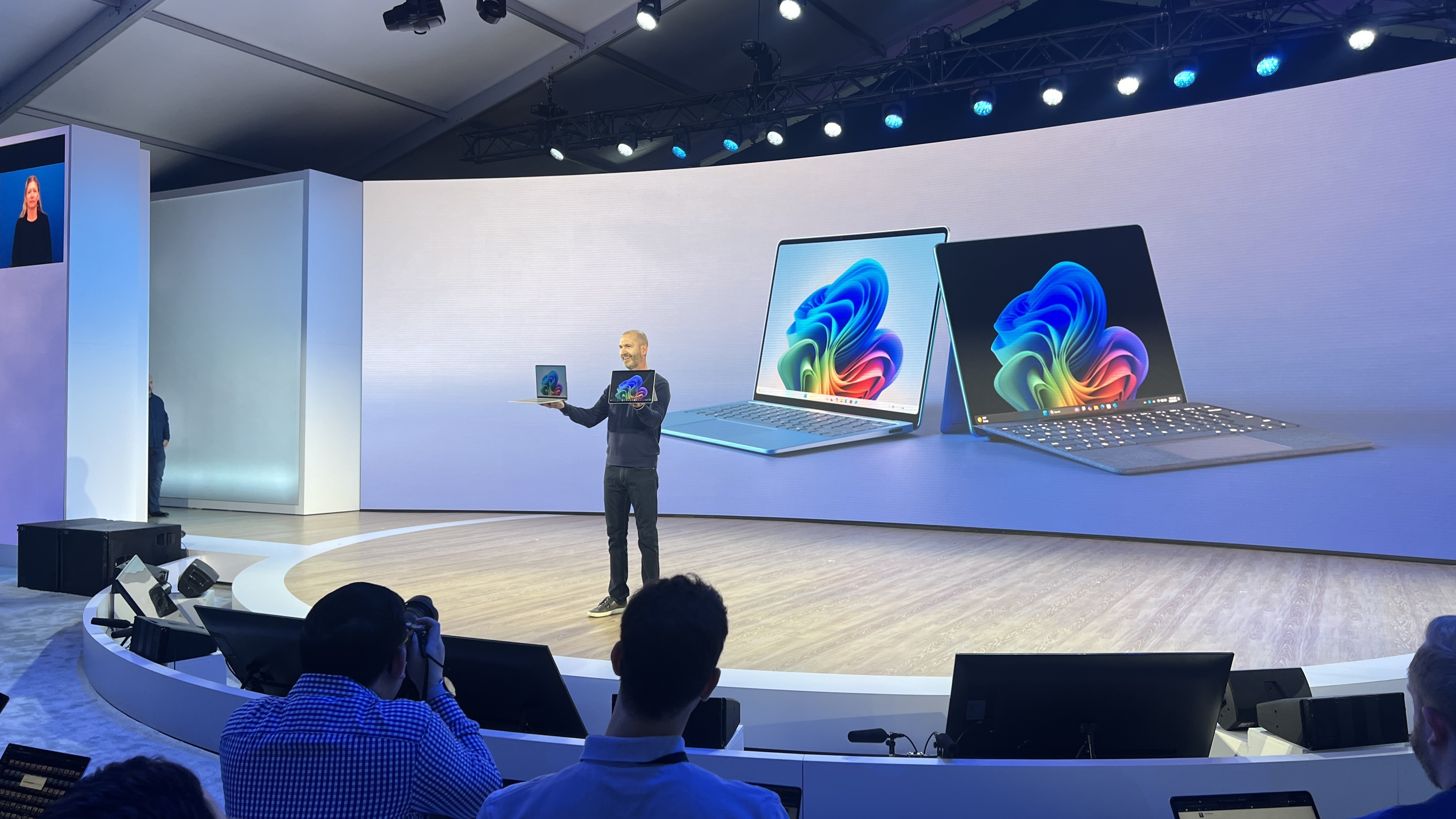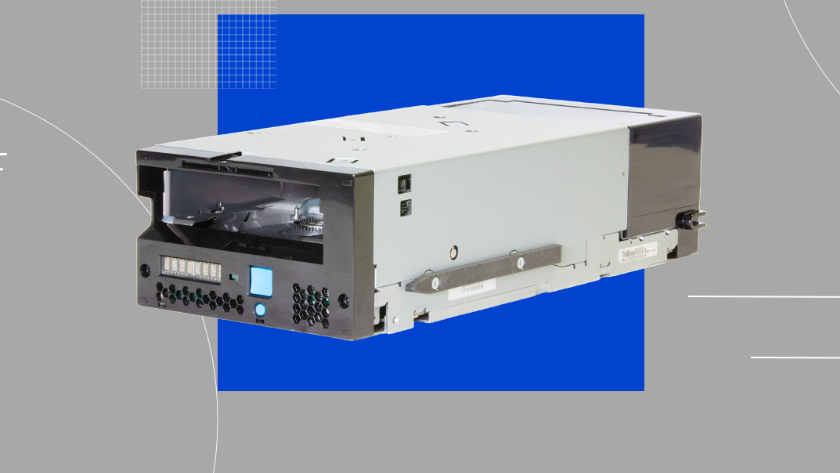My week so far with Copilot+ PC laptops: they might be the future, but not for the reasons Microsoft wants
With the Surface Laptop, Microsoft has finally got a MacBook killer

This week we saw the launch of Copilot+ PC devices – essentially, Windows 11 laptops that come powered by Qualcomm’s new Snapdragon X chips that feature an NPU (Neural Processing Unit) that’s specifically designed to handle complex AI (artificial intelligence) tasks.
The idea of on-device AI is certainly very interesting (as is the technology behind it) and the benefits are compelling: you don’t need an internet connection, and security is much higher as you’re not sharing information with companies providing AI tools – it should all remain encrypted on your laptop.
In the run-up to the launch of Copilot+ PC devices, I was skeptical about how revolutionary these new laptops will actually be. It didn’t help that Microsoft brought one of the key features – the Copilot AI assistant itself – to Windows 11 already in the form of a beta. While having quick access to an AI chatbot from within the operating system was novel at first, after trying it a few times, I never used it again. I simply couldn’t see how it could make my day-to-day life easier.
The fact that Microsoft’s other major selling point of Copilot+ PCs, the Recall feature, has been dogged by controversy surrounding privacy concerns – with many people understandably concerned that by taking snapshots of your PC activity every minute or so, Microsoft is collecting a huge amount of sensitive information – and the company’s past actions haven’t helped make people more comfortable about that.
In fact, the negative response to Recall was so intense that Microsoft pulled the feature from launching alongside Copilot+ PC devices, instead making it available to Windows Insiders, who can test it out before a wider release later.
This led to the rather strange spectacle of having Microsoft (and later on, other manufacturers such as Samsung who have also launched Copilot+ PC products) having to wax lyrical about a feature that we all know has been delayed due to user concerns.
Still, when I went to visit Microsoft on Tuesday for the launch of Copilot+ PC, the team were in bullish form, telling me that Copilot+ PCs are an ‘inflexion point’ in the history of computing and technology, and as revolutionary as the first IBM PC and rise of the smartphones.

Bold words, certainly, and I was keen to see just how revolutionary these devices are. Since Tuesday, I’ve been using the new Surface Laptop every day as my main computer, and I have already found a major change that really could shake up the laptop industry and give Microsoft a device that can truly challenge MacBooks again – but it has nothing to do with AI.
AI why?
Of course with all the hype surrounding Copilot+ PC AI features, so I was keen to see if they were as essential as Microsoft and others have been telling me they are. However, to be blunt, they left me with the same mix of awe at the raw technology, and bafflement about how it will be useful.
One of the more interesting implementations is Cocreator, a new AI-powered feature now found in Windows 11’s iconic Paint app. You can make a simple drawing (which Paint is usually used for), then type in a prompt (such as describing what the drawing is and what style you want the image to be), and using a slider you can adjust how much the AI alters your image – with the results displayed in a second panel.
It’s undeniably impressive, especially considering that this is all being done in a free, basic app, while also using the built-in NPU of the laptop to do all of this.
But, after that initial impressive impression, I was once again left wondering what actual use this would be for me. It’s a fun diversion, sure, but I just can’t see it being that useful for my day to day life. Perhaps graphic designers and artists might like it, but then I doubt they would use a basic app like Paint to work on. And, while the results were impressive when turning a rushed doodle into something more recognisable, the images made by Cocreator were still obviously made by AI – and most professionals will likely not want to rely on designs like that.

Copilot also remains a frustration. It can now be called up with a push of a dedicated Copilot button that’s part of the keyboards that come with Copilot+ PC devices, but even when quickly opening it up, I struggle to think of ways to use it to its full potential. It doesn’t help that it feels like a separate app, rather than integrating with other apps – so it just feels like using it is yet another step – complicating tasks rather than simplifying them.
At work we use Slack, an instant messaging app that allows our global team to keep in contact. So, I thought I’d ask Copilot to “write me a generic hello message to my co-workers in Slack.”
Here’s what Copilot replied with: “Hi team! A friendly reminder about our off-site tomorrow. Please come wearing comfy clothes. We’ll provide breakfast and lunch. See you at 9 a.m.!”
While the tone of the message is broadly what I was after, if nothing like what I'd actually write in Slack to my team, the fact that it invented an off-site event and then promised that food would be provided meant I obviously could not use it – I’d have to rewrite almost everything in the Copilot app, then copy the text over to the Slack app to post. How is this supposed to save me time?
A few days later I was sitting in a presentation and had a great idea for how Copilot could help me – so I asked it to transcribe the presentation using the Surface Laptop’s microphone, which could save me from frantically typing away trying to note down everything that’s being said.
Unfortunately, Copilot was unable to help, telling me it could not transcribe, and could not take live audio either. It suggested it could take my notes and summarize them for me – which wasn’t going to be much help.
Instead, I used a feature in Microsoft Word to record the audio and transcribe it. I then copied and pasted the transcript into Copilot to summarize – a crafty workaround to get what I needed… or so I thought. Instead, Copilot told me that the text was too long, so I could only summarize some of the presentation. The result was good, but because it could not transcribe the entire presentation at once, it was useless – not to mention that once again I was copying and pasting text between Copilot and various apps, whilst also typing out prompts for the AI to follow.
It all felt like more effort than it was worth, the opposite of what was promised. After that, I’ve barely used it, apart from asking it what the standard door size is in the UK (long story), which is something I could have just Googled anyway.
So, are Copilot+ PC devices like the Surface Laptop a noble failure? Certainly not – there’s a lot I’ve really liked about the Surface Laptop – but Copilot isn’t one of them.

ARM is the gamechanger
Much has been made of the Snapdragon X chips – both the Elite and Plus variants – and how thanks to their NPUs hitting 45 TOPS (Trillions of Operations per Second) they are able to handle intensive AI tasks with ease – but whilst using the Surface Laptop, which is powered by the 12-core Snapdragon X X1E80100 chip, I was far more impressed with the other benefits this ARM-based chip offers Copilot+ PC devices that have them.
The most impressive of all is the boost to battery life these chips offer. I’ve been getting increasingly annoyed at the poor battery lives of even the best Windows laptops. Not only do they seem to lose battery life quickly, but they are pretty poor at losing battery life even when not in use. Far too often, I’ve picked up my work laptop to go to a meeting, only to find when I open it up that the battery is dead – even though the last time I used it there was plenty left.
This has led me to almost exclusively use MacBooks these days. Thanks to their ARM-based chips (the M1, M2, M3), the best MacBooks can last a lot longer than Windows 11 laptops, while also keeping their charge even when not used for a while – but with Copilot+ PC, that could all change.
I charged the Surface Laptop about two and a half days before writing this, and in that time I’ve been using it on and off throughout the day, including trying out AI features, taking part in (many) video calls, recording and transcribing a presentation and general internet browsing. With many Windows laptops in the past, I would have probably had to charge at least once a day. Even if I didn’t need to, past experience makes me worried about traveling without charging my work laptop beforehand. Yep, range anxiety doesn’t just affect people with electric cars – Windows laptop users get it as well. With the Surface Laptop, not only have I not had to charge it for several days, it’s still over 30%.
This is an absolute game changer for me, as while battery life has been massively improved, that hasn’t come at the cost of performance. So far, I’ve been able to run any Windows 11 app – thanks to Microsoft seemingly figuring out how to get those apps, which are designed to run on Intel and AMD chips, to work on ARM chips.
The power efficiency of the Snapdragon X chips also means that the Surface Laptop is thin and light – and crucially, it doesn’t heat up quickly which means there’s no distracting fan noise. The laptop has been essentially silent whilst running, again a big change from Windows laptops I’ve used in the past.
This, more than any AI features, has made me seriously consider going back to a Windows laptop. You’re getting build quality and performance that matches MacBooks, with a huge battery life. And, for all the grief I give Microsoft about some of its more obnoxious choices when it comes to Windows 11, I still feel more comfortable using that operating system compared to macOS. Sure, Apple’s OS is arguably better than Microsoft’s, but I’ve been using Windows since the days of Windows 3.1, and that means I know how the OS works, and how to fix errors and use workarounds when needed. I’m less used to macOS and its sometimes weird way of doing things. Oh, and the Surface Laptop comes with a touchscreen, something Apple seems to refuse to bring to its MacBooks, despite my time with using the iPad Pro (M4) and the Magic Keyboard that proved that a touchscreen MacBook could work. Rather than wait for Apple to agree, I could just use the Surface Laptop.
So, despite the importance of Copilot in Microsoft’s eyes, it’s not the most impressive thing about Copilot+ PCs – it’s the hardware. These devices could transform the laptop market, just not in the way Microsoft thinks.
You might also like
Get daily insight, inspiration and deals in your inbox
Sign up for breaking news, reviews, opinion, top tech deals, and more.

Matt is TechRadar's Managing Editor for Core Tech, looking after computing and mobile technology. Having written for a number of publications such as PC Plus, PC Format, T3 and Linux Format, there's no aspect of technology that Matt isn't passionate about, especially computing and PC gaming. He’s personally reviewed and used most of the laptops in our best laptops guide - and since joining TechRadar in 2014, he's reviewed over 250 laptops and computing accessories personally.